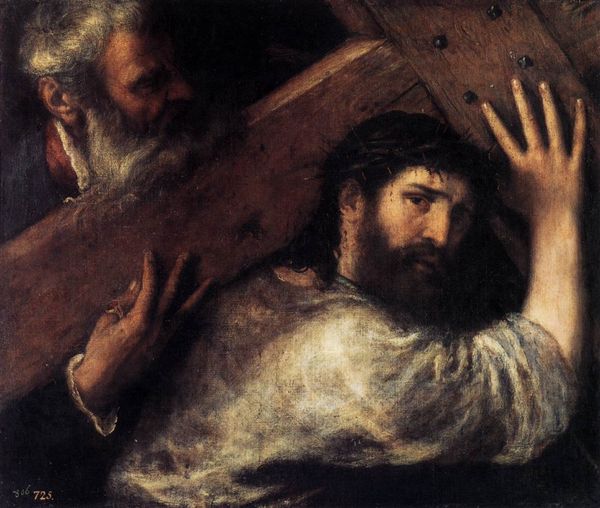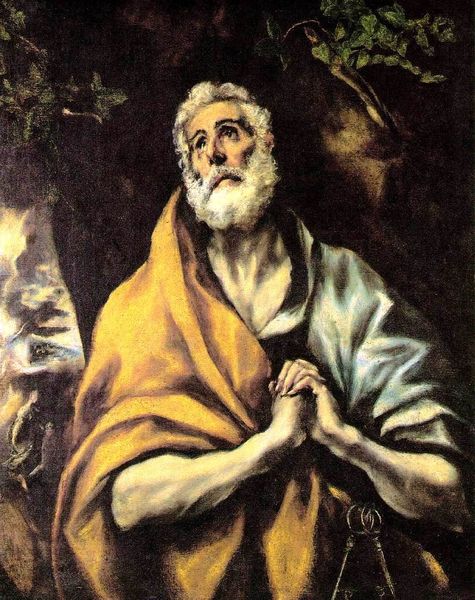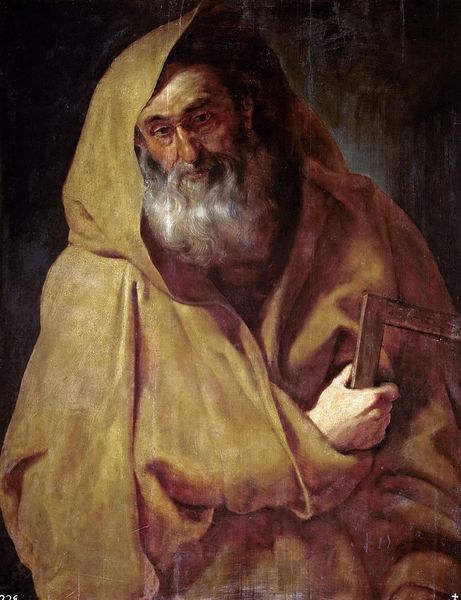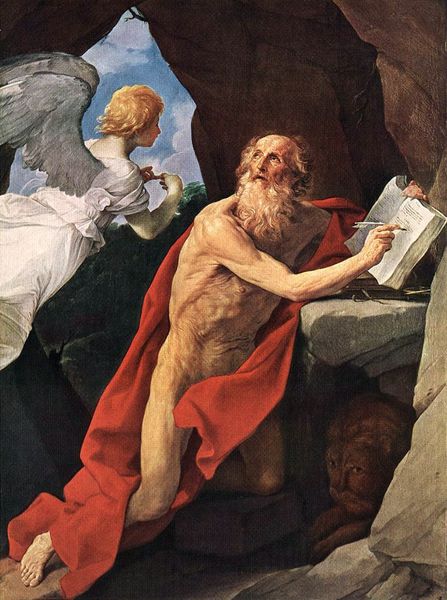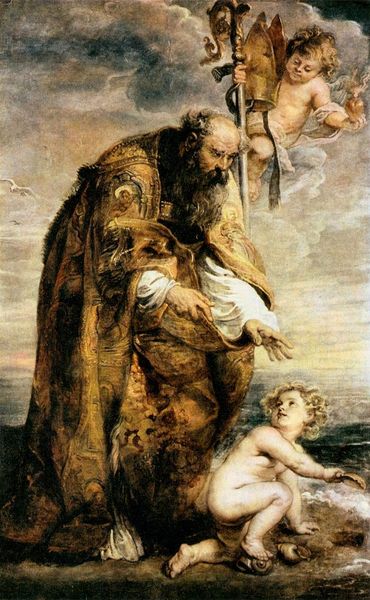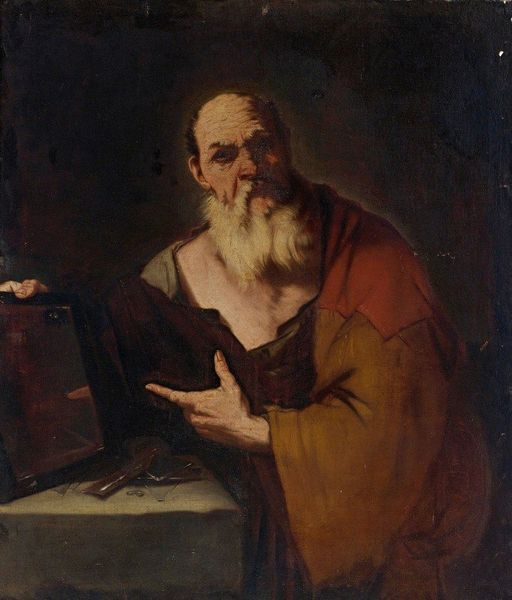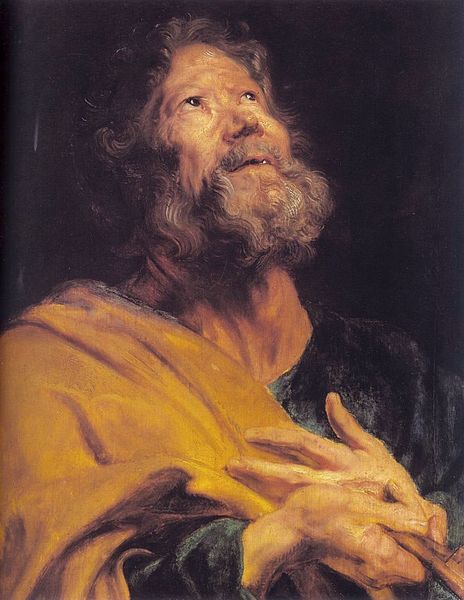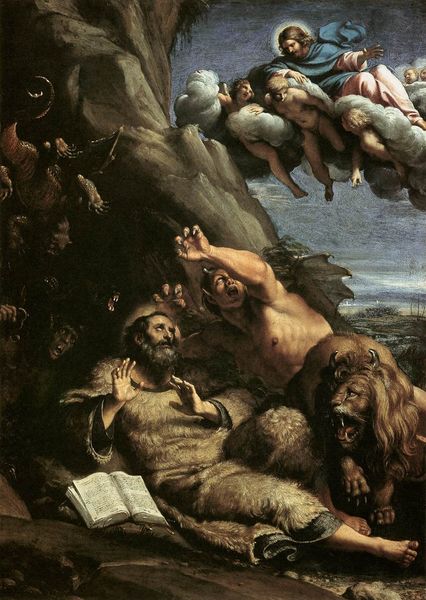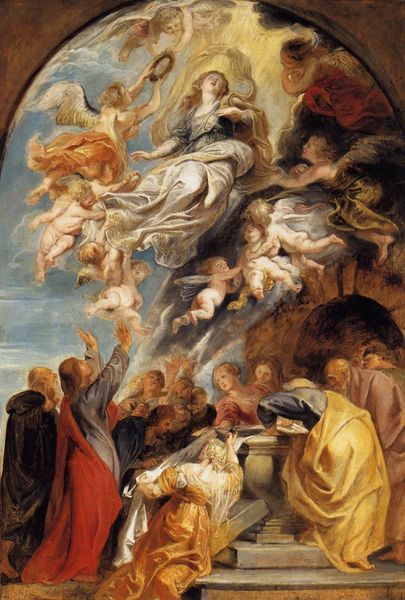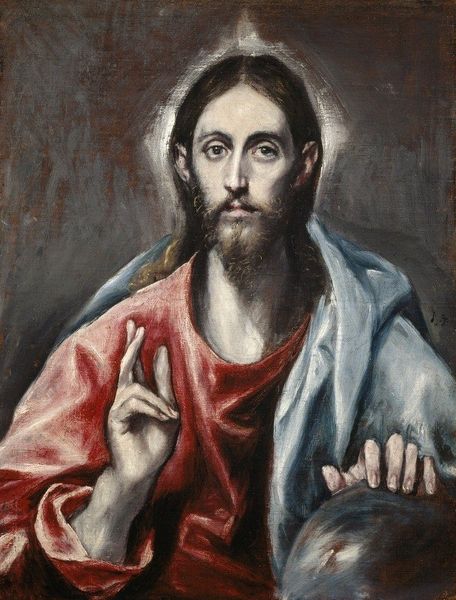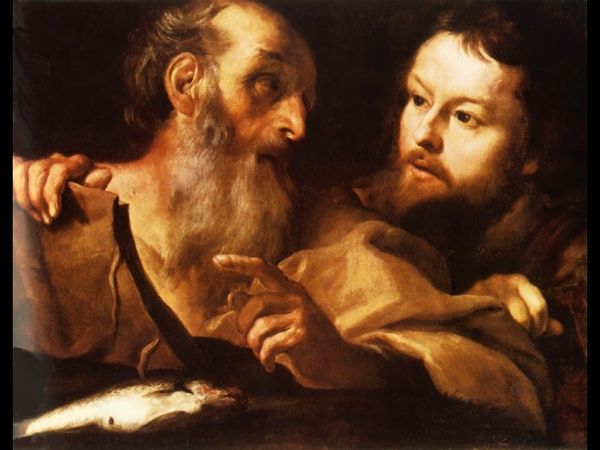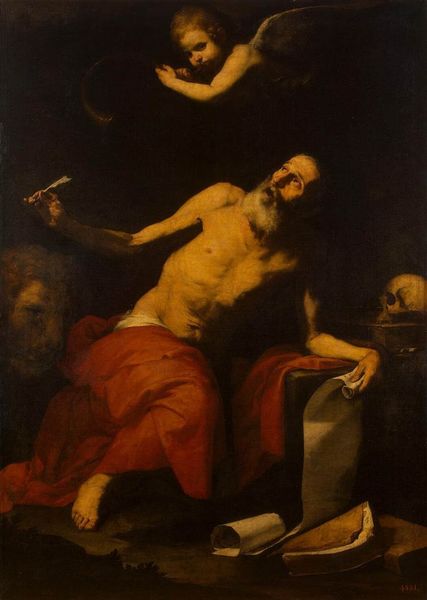
painting, oil-paint
#
portrait
#
baroque
#
painting
#
oil-paint
#
classical-realism
#
charcoal drawing
#
figuration
#
oil painting
#
christianity
#
history-painting
#
portrait art
Dimensions: 96 x 81 cm
Copyright: Public domain
Curator: This is Giovanni Domenico Tiepolo's "God the Father," currently residing here at the Budapest Museum of Fine Arts. Editor: The overwhelming feeling I get is… pity. The way God is rendered feels almost frail, humanized in a way I'm not accustomed to seeing. His outstretched hands seem to almost beg, perhaps pleading for salvation. Curator: Indeed. It is a striking depiction that contrasts with the traditional images of a powerful, omnipotent God that had permeated much of art history to this point. This oil-paint sketch represents Tiepolo's move to personalize and even, some might argue, humanize, a divine figure central to the Catholic faith. Tiepolo produced this around the time the church was changing their representations to resonate with a broader and diverse viewership. Editor: Look at his beard, long and flowing, certainly an established symbol of wisdom, but rendered here with almost pathetic straggles. There’s something vulnerable, wearying there. Even the cherubs in the upper right, typically symbols of comfort, appear to regard him with concerned faces. Is Tiepolo communicating a sense of God's burden, perhaps His empathy for humankind? Curator: I believe so. To contextualize, Tiepolo was working in an era of increasing secularization, with an emergent philosophical trend centered on individualism and rationalism; as the institution struggled, artists adopted emotive expression, seeking to rekindle and reinforce faith through direct emotional appeal rather than stoic and distant representation. This, perhaps, is an instance of Tiepolo trying to meet a very modern audience with changing ideas and a world in religious upheaval. Editor: And this explains his very earthly rendering of God; the aged skin, almost transparent in places, the worry etched onto His brow. It feels very much of its time and reflects a deep current shift within Christianity itself. Tiepolo uses universally recognizable images, figures and emotions as a connection, in an era in search of connection. It is powerful to know how symbols retain strength and impact throughout great and impactful cultural changes. Curator: It truly underscores how art both reflects and responds to the ever-shifting tides of socio-political and religious history, it is one of many wonderful instances of an artwork changing representation to serve the masses in a way previously never encountered. Editor: A fascinating lens to understand, this is, a testament to Tiepolo's artistry.
Comments
No comments
Be the first to comment and join the conversation on the ultimate creative platform.
